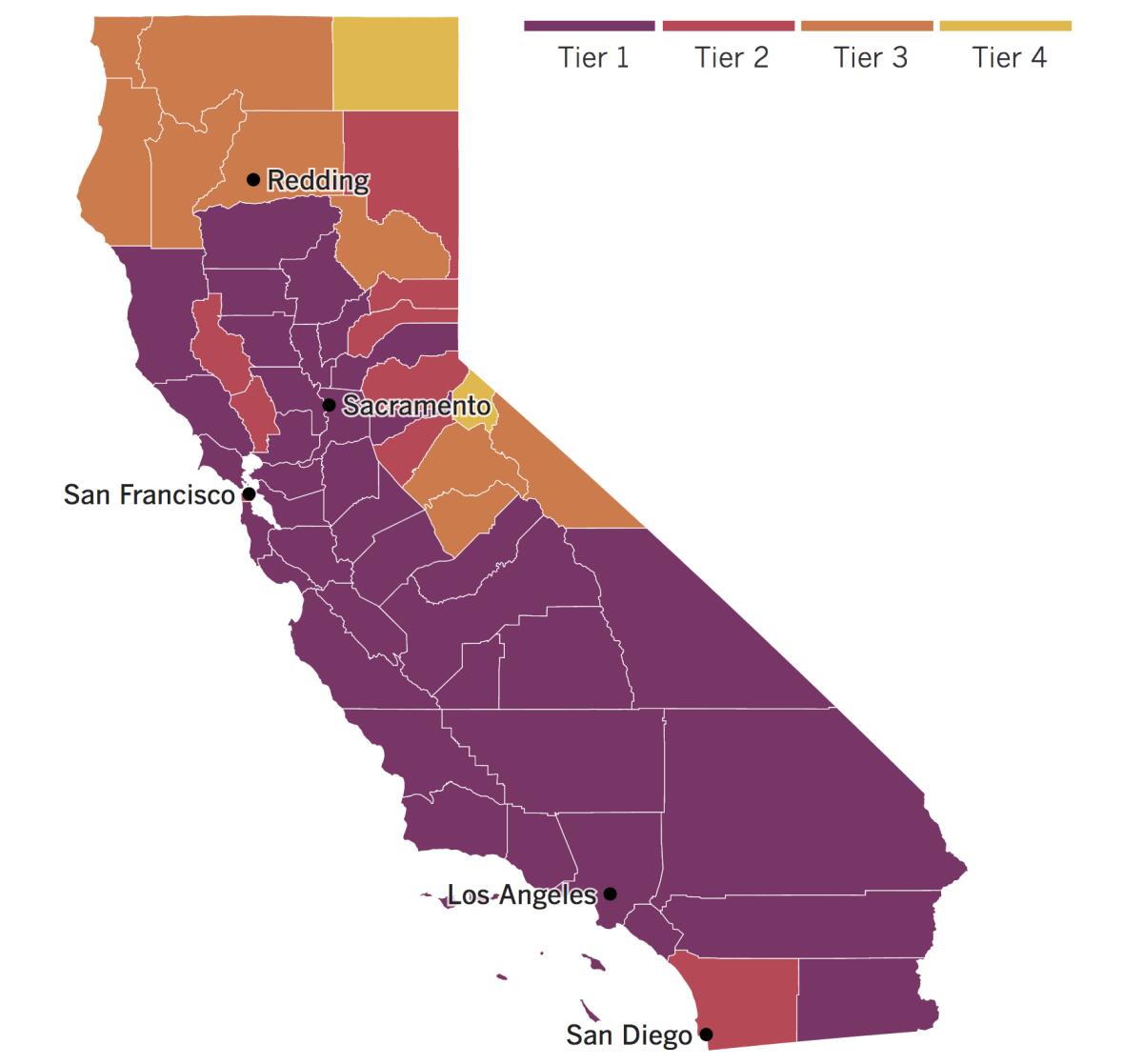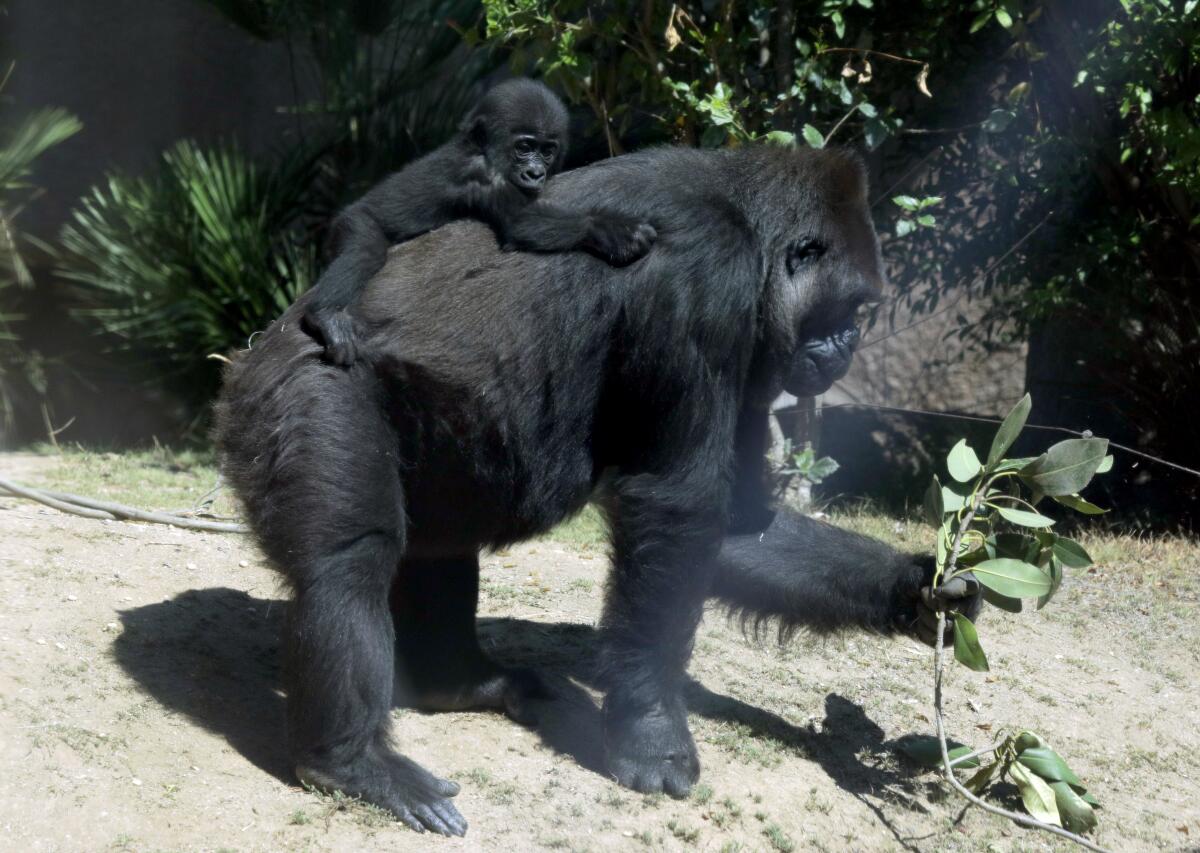Coronavirus Today: Can we pass our new test?
- Share via
Good evening. I’m Faith E. Pinho, and it’s Friday, Sept. 4. Here’s the latest on what’s happening with the coronavirus, plus ways to spend your weekend and a look at some of the week’s best stories.
A holiday to mark summer’s end, a blistering heatwave and easing restrictions — what could possibly go wrong this Labor Day?
Experts worry history will repeat itself this upcoming holiday weekend. In California, Memorial Day brought a spike in coronavirus infections, and daily new cases crested in July. There is some evidence that behavior has changed since then, with more people wearing masks and social distancing. But as Southern California’s beach cities brace for crowds, officials in the region still are cautioning people to play it safe. “This is not a Labor Day weekend that will be full of celebrations,” Los Angeles Mayor Eric Garcetti said. “You need to cancel all plans for gatherings.”
The warnings against gatherings may be especially painful for Latino families, whose close bonds can present a chink in the armor guarding against COVID-19, experts say. While much attention has been focused on the dangers of large parties, experts say small gatherings among friends and family can quietly be just as dangerous — particularly for Latinos, whose overrepresentation in essential industries has left them disproportionately affected by the pandemic.
A recent poll found Latinos are more worried than other groups about the coronavirus, and as a result, most are careful to take precautions. But Reymond Padilla, a Whittier youth softball director who follows his safety routine with zealous devotion, said even he can feel a “false sense of safety” around loved ones and at home.
Home is also where an unusually high number of people have died this year in Los Angeles County, a new Times analysis has found. When COVID-19 cases began to surface in the U.S., home deaths started to escalate and continued to build through the following months, according to records compiled by the chief medical examiner and obtained by The Times. In the first six months of 2020, 330 more people died at home than in a typical year. Just 48 of those deaths were officially linked to COVID-19, but experts and officials say that is likely an undercount and that the coronavirus may have caused many more to some degree.

Some labor news this Labor Day weekend: Jobs growth in the U.S. slowed in August, underscoring how the economic recovery is losing steam. The growth — 1.4 million, a figure inflated by temporary census-worker jobs — was slightly higher than some analysts expected, but the economy is still 11.5 million jobs short of pre-pandemic levels.
Food processing has always been dangerous work. The pandemic has only amplified those threats for a workforce largely made up of people of color, immigrants and migrants. Workers fear not only contracting the virus, but also getting injured as more employees call out sick, leaving less staff to meet heightened demands for food production. Tens of thousands of workers nationwide have tested positive for the coronavirus and over 200 have died, most in the meatpacking industry, and in L.A. County, food processing accounts for the second highest number of infections by workplace, following nursing homes. But despite the escalating stakes, an examination by The Times found vast inconsistencies in workplace reporting.
By the numbers
California cases and deaths as of 4:36 p.m. PDT Friday:

Track the latest numbers and how they break down in California with our graphics.
See the current status of California’s reopening, county by county, with our tracker.


What to read this weekend
Sheltering in place during the pandemic? Some immigrants facing deportation have been doing it for years. Rosa Sabido first took sanctuary in a Colorado church in 2017. Since then, her mother and five of her dogs have died. Lately, she spends her days writing poetry, working on her case and walking the church’s halls and lawn. And although the pandemic has worsened her isolation, it’s also given her time to reflect. “I was never patient but have learned patience,” she says. “I have learned to be with myself.”
When Devo cofounder and film composer Mark Mothersbaugh fell ill with COVID-19, first came the 103-degree fever, he told The Times recently as he recovered at home. Then came the nurse who told him: “You need an ambulance right now.” Then came the ventilator. And then, during his 18 days in the ICU, came the delusions of what had landed him there.

“This is a genuine threat to the existence of independent music.” Facing the strong possibility of permanent closure unless they receive federal help, clubs and other venues are hoping for a lifeline from Congress — and they might get it from legislation that has broad bipartisan support. Without it, they say, the live music industry might take years to recover, even after venues can legally reopen.
Broadcast TV is going to look quite different when the fall season kicks off in late September, as the shutdown of productions has forced the networks to get creative. The pandemic is also accelerating the end of concept that dates back decades: the very idea of a fall TV season.
Without pop-up markets or craft markets, indie fashion and lifestyle shops are turning to mystery boxes and Instagram Live. And looking ahead to the holiday season, they feel a mix of optimism and skepticism. “Digital life just doesn’t compare to the in-person experience,” one artisan fair cofounder said. “But it’ll have to do for now.”
Your support helps us deliver the news that matters most.
What to do this weekend
Get outside. You don’t need to get out of town to get out of doors, as you’ll learn from our guide to Griffith Park — its classics, its hidden gems, its wildlife and more. We offer a suggested itinerary plus 11 essentials. If you’re headed for another park, trail or the beach, be sure to check the latest on what’s open and what’s closed. Subscribe to The Wild for more on the outdoors and Escapes for more California travel ideas.
Watch something great. On our weekend culture watch list: Lucha VaVoom and the Met’s “Porgy and Bess,” plus 13 other picks. If you haven’t already embraced “Schitt’s Creek” as the perfect pandemic sitcom, it’s not too late, as columnist Mary McNamara found. And in his Indie Focus newsletter, Mark Olsen discusses an enigmatic new psychological thriller and a live-action remake of a Disney classic.
Eat something great. Turn on your oven for 12 hours during a heat wave? If you do it overnight when it’s cooler, it’ll be worth it for foolproof pulled pork, slow-roasted using a pitmaster’s secrets. If you’re impatient, throw a cauliflower on the grill for a surprisingly meaty vegan main. Then cool off with passionfruit sorbet or a watermelon — here’s how to pick one. Get our Cooking newsletter for more ideas.
Go online. Here’s The Times’ guide to the internet for when you’re looking for information on self-care, feel like learning something new or interesting, or want to expand your entertainment horizons.
Resources
— For general safety, wash your hands for at least 20 seconds (here’s a super-fun how-to video). Stop touching your face, and keep your phone clean. Practice social distancing, maintaining a six-foot radius of personal space in public. And wear a mask if you leave home. Here’s how to do it right.
— Watch for symptoms including fever, cough, shortness of breath, chills, repeated shaking with chills, muscle pain, headache, sore throat and loss of taste or smell. If you’re worried you might be infected, call your doctor or urgent care clinic before going there.
— Need a COVID-19 test? Here’s how to receive a free test if you’re in L.A. County. And here’s a map of testing sites across California.
— Here’s how to care for someone with COVID-19, from monitoring their symptoms to preventing the virus’ spread.
— If your job has been affected by the pandemic, here’s how to file for unemployment.
— Here are some free resources for restaurant workers and entertainment industry professionals having trouble making ends meet.
— Advice for helping kids navigate pandemic life includes being honest about uncertainties, acknowledging their feelings and sticking to a routine. Here’s guidance from the CDC.
— In need of mental health services? Here are resources for coping during the crisis from the CDC and the L.A. County Department of Mental Health. L.A. County residents can also call (800) 854-7771 or text “LA” to 741741.
— For domestic violence victims, the pandemic can pose a “worst-case scenario,” advocates say. If you or someone you know is experiencing such abuse, call the National Domestic Violence Hotline at 1-800-799-SAFE (7233) or L.A. County’s hotline at 1-800-978-3600. Here are more ways to get help.The pandemic in pictures

Gone are the giraffe feedings, the telescopes to spy on zebras and the crowding along a fence to watch flamingos stretch their winds. The L.A. Zoo has reopened as of Wednesday, but in the coronavirus era, the experience has been stripped down to its barest bones to conform with safety protocols.
Visitors are limited to 1,200 daily. Tickets are being sold in two-week blocks in case zoo officials need to modify their plan. Face masks are required for visitors and children age 2 and older. Outdoor eating facilities are closed, but visitors can still buy grab-and-go items.
After living for so long in relative isolation, meerkats, chimpanzees and other animals were hyper-aware of human behavior, said Dr. Dominique Keller, the zoo’s chief veterinarian and director of animal health. “I’d like to think they’ve missed us,” she said, “but I’ll be frank and say no.”
Our reporters covering the coronavirus outbreak want to hear from you. Email us your questions, and we’ll do our best to answer them. You can find more answers in our Frequently Asked Questions roundup and in our reopening tracker.
For the most up-to-date coronavirus coverage from The Times over the weekend, visit our homepage and our Health section, sign up for our breaking news alerts, and follow us on Twitter and on Instagram.




